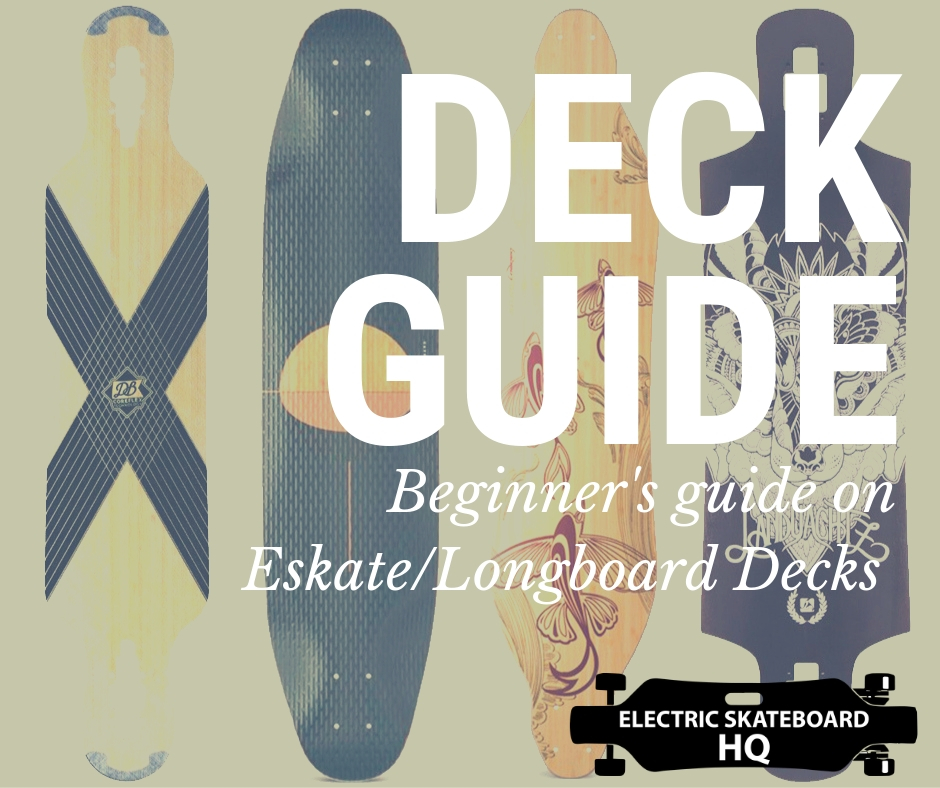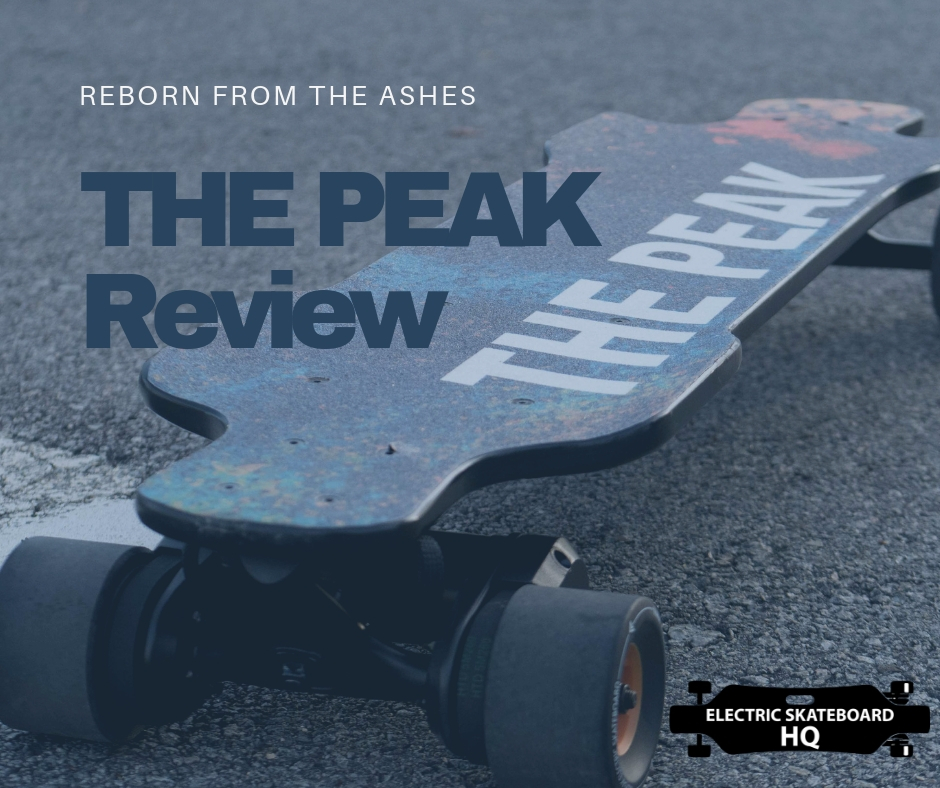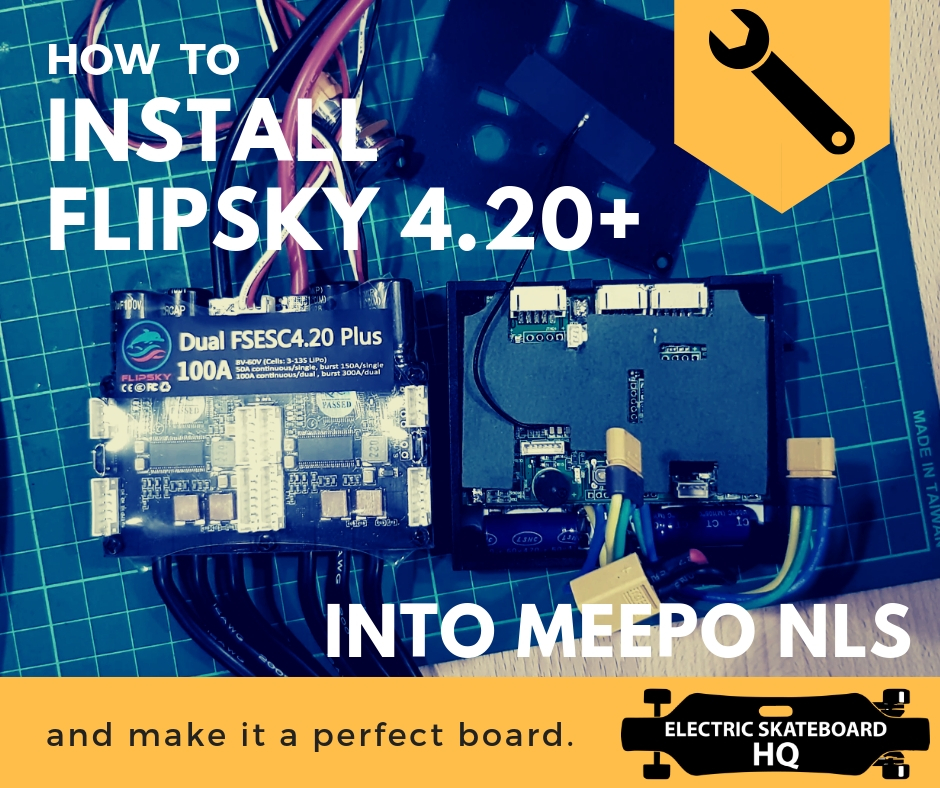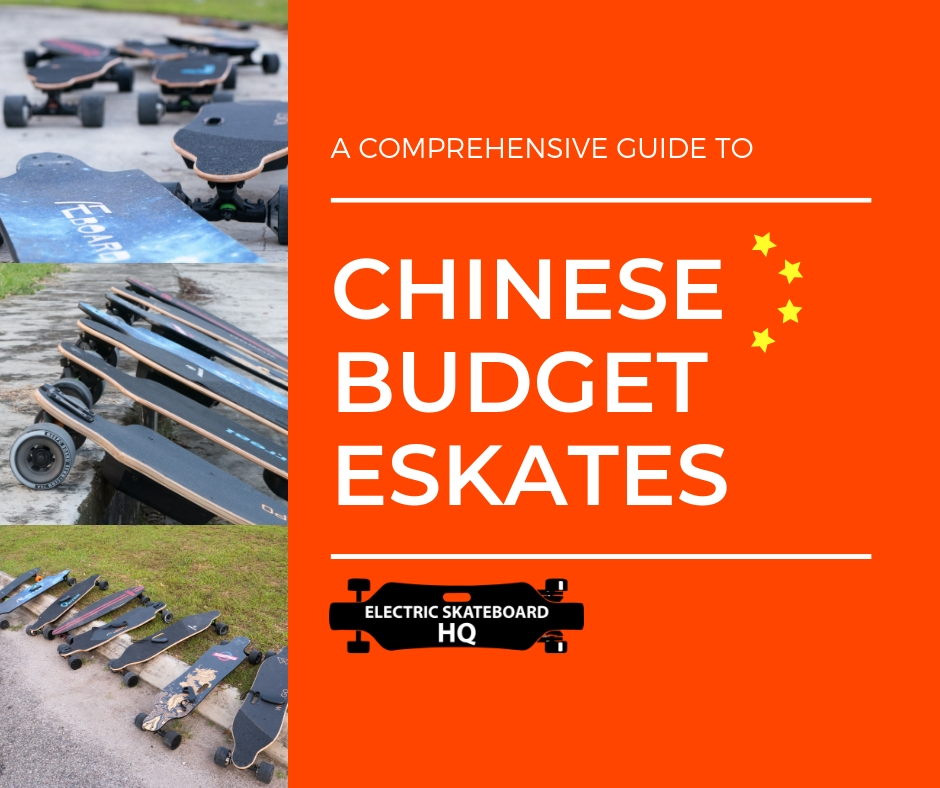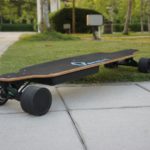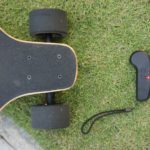For the non-skater who just arrived in the
An
In this guide, I will try to be as comprehensive as possible in explaining all the features of a longboard deck and how those features are implicated on an electric skateboard.
Anatomy of a deck:

When it comes to decks, there is a longboard deck and there is a shortboard deck. The typical length of a longboard deck ranges somewhere between 33″ and 60″. They are obviously longer than the traditional skateboard (27″-32″).
Wheel base
The wheelbase is the distance between your board’s inner mounting holes. This distance is what determines how far apart your front and back wheels will be. Wheelbases measurements are typically between 13″ and 15″.
The wider the wheelbase, the more stable the board will feel. However, the wider the wheelbase also means the larger the turning radius.
Generally speaking, you should pick a wheelbase that is as narrow as you are comfortable with in order to maximize the turning ability.
Directional vs Symmetry

Directional boards are meant to have a forward facing side (nose) and a backward facing side (tail). The deck shape will generally make it clear which way should be forward and vice versa.
Directional boards are great for downhill boarding, carving and cruising. Symmetrical boards have the same feel no matter which way the board is facing. In the longboard
Having a motor means Eskate are always directional in purpose (unless you don’t mind riding in reverse gear or riding motor mount forward) but you can of course use whatever deck you want.
Kicktail

When you look at a regular skateboard, you will see kick tails on both ends. Their purpose is to let you lift one end of the board off of the ground so you can hop curbs, make quick turns, tail brake and do tricks.
When it comes to longboards, directional boards can have kick tails on just one end and on symmetrical boards, kick tails on both ends. They are a necessity on many freestyle boards. They’re really handy on cruiser boards as well.
There are a few noteworthy commercial
PS: When doing a DIY build, a kicktail practically
Motor in front of the wheels Motor behind the wheels
Wheel well/ cut out
Wheel wells and cutouts are there to prevent wheel bites. (When your wheel rubs the deck and throws you off the board.). They are important in
A good design cut out allows your foot to be placed as near to the truck as possible. The closer your feet are to the trucks, the more responsive the control will feel.
Concave/ Shape

Flat skateboard decks give you extra room for your feet on the board. This is ideal for doing many tricks, as well as board walking.
In Eskate, flat deck is a pretty bad idea, you will find it difficult to find your footing.
Eg: Ownboard W1S, Wowgo 2s.

Convex boards have a deck that arches upwards, which is much different than other decks. This provide riders with a more instinctive foot placement, which is ideal for skaters who love downhill riding. They are more uncommon than most other boards.
It didn’t receive much love in Eskate world though.
Eg: Original Meepo v1.

The radial shape is the most common of all the deck shapes. It has a distinct U-shape curve. The level of deepness of the curve can vary between decks. All types of skaters prefer this deck shape because its concave gives you a lot better grip. This comes in handy for all kinds of skateboarding.

The progressive shape is basically a more intense adaptation of the radial concave. With this deck, you get an even more secure feel due to the wider base and rail walls.

Flat-cave, or tub concave, is when the rails are extended and angled from the deck. Flat-cave is much like a radial board but without the subtle curvature. You may be able to feel more energy shifts, but overall tub boards make for a more easygoing ride.

W-concave is similar to regular concave in many ways. It’s main function is to help keep your feet staying put on the board. It really gives you a lot of grip. It can be described as having two side-by-side concave sections. The W-concave feature can be a bit pricey. It comes on some pretty expensive boards.
Some says W-Concave gets in the way of kick pushing. Not something we need to worry about in an Eskate! Hurray!
Eg. Meepo V2.

Asymmetrical concave raises the deck rails up at different angles, ultimately giving the rider a boost of power through the heels. This is ideal for skaters who like to make a lot of turns or who do a lot of weaving in and out.
Board Flex
When it comes to different board flexes, there are many different levels of flex. Flex is dependent on materials used and
While more flex means better shock absorption, it can be unstable when riding at high speed, as the deck can become like a trampoline and throw you off the board.
The Loaded Vanguard deck used by the previous gen Boosted are known for

PS: In the
Ply

The thin layers of wood that are pressed tightly together to make the longboard deck is called the ply.
Instead of utilizing one piece of solid wood, many manufacturers opt for creating a super strong board by layering the wood in a cross-grain pattern. Most boards are not over 9-ply.
Typical skateboards are closer to 7-ply.
The ply number obviously affects the flex profile of a deck.
Camber-rocker
There is a curve running the length of your skateboard that determines the feel of the deck and the type of ride you get on it.
Longboard decks with a raised middle are known as camber longboards and when they have a dropped middle they are referred to as rocker longboards.
The angles are pretty subtle, but can still affect the level of flex of your deck.
While camber and flex seems to be in fashion, a rocker deck comes with some important benefit. The obvious advantage is lower ride height, giving a more stable ride.
Secondly, when accelerating and decelerating, rocker curve gives your foot something to push against, making speed changes more comfortable.
The notable eskate with rocker deck out there is the Meepo Classic, which realized all the advantages of a rocker deck and gives an addictive ride.

Mounts

The most common type of truck mounting you will find is the top-mount. Top-mounts are screwed onto the bottom of the deck to ensure that the trucks stay positioned under your feet at all times. This is the most popular mount style because it allows the perfect amount of control and leverage for a variety of skating styles.

A drop mount combines the characteristics of a top mount and a drop -though. You cannot see the truck from the top of the deck because it’s positioned into the deck instead of through the deck. With a drop mount, you will get less leverage than a top mount, but more leverage than a full drop-through.

Drop-through mounts are different than a traditional top-mount because you do not screw the hardware through mounting holes in order to attach the trucks. Instead, you drop the trucks through cut-outs made in both the nose and tail and attach them on the sides. We are seeing more and more longboards and cruisers with drop-through truck mounts. This mounting style make the deck not as responsive as a traditional top-mount, but you will get more stability.

Drop deck is not a mount type, I’ve included it here as it’s best explained by the same graphic.
A dropped deck is when the deck literally drops down in the middle, which makes the nose and the tail raised. The extremity of the drop can vary between decks. Due to the low center of gravity, boards with a dropped deck get better overall control and stability.

A double drop is when drop-through truck mounting is used in conjunction with a dropped deck. It’s important to select the right sized wheel diameter to counteract how low your board is. In doing so, you will prevent rail bite, which is when your board comes into contact with and “bites” the ground. This can be a dangerous event that you should strive to avoid.
Deck Material
Of course there is a variety of choice when it comes to choosing material for the deck.
Maple
Maple is a material that is commonly used in many wood working projects due to its grain pattern. This makes it a go-to choice for skateboard decks. Maple wood is known for withstanding the test of time, meaning it’s very sturdy and reliable. It can endure even the roughest skateboard riding.

Bamboo
Bamboo is a popular material for many things due to its incredibly light weight and flexibility, which is specifically ideal for skateboards. Bamboo skateboards are a perfect choice for someone looking for a board for commuting and cruising. It’s light weight makes it a breeze to carry.

Carbon Fiber
By far the most expensive material option for a skateboard would be carbon fiber. Carbon fiber boards are often used as professional boards. They are made to help you easily maneuver around turns, as well as quickly boost

Styles of longboard Deck
As different ride styles require a different set of features, longboard deck can be classified accordingly.
I think Tactics Board shop did a very good job walking through those deck styles, so I will just link to them here.
Freestyle
Good for tricks, getting around, more versatile
Features:
- Camber (bouncy, lively carve)
- Thin
- Lightweight
- Syemmtrical
- Twin Kicktail
Examples:
Freeride
Riding a lot of hills and lots of sliding, blending other style like downhill.
Characteristics: (A lot of similarity to downhill)
- Fairly Stiff (9ply/ composite
fiber glass maple) - Symmetrical (For riding switch)
long-wheel base (20-30 inch)- Have foot pockets/ Drops
Examples:
How to Choose a Freeride Longboard Deck – Tactics.com
Downhill
Main aims is to maximized speed and keep control.
Characteristic: (A lot of similarities with Freeride deck)
- Stiff (Stable)
- Long-wheelbase (25-30inches)
- Good concave
Examples:
Cruising/ Carving Longboard Deck
Easy to handle longboard to get you from point A to point B. Not designed with doing tricks or jumps in mind.
Characteristic:
- Flexible (Vibration dampening, lively carvy bouncy feel, increase responsiveness)
- Camber
Examples:
Mountain Board Deck

When you are going off-road, a good sturdy deck is needed.
Trampa deck is one of the most used deck for DIY off road build.
Made from re-enforced glass and plastic
Some special decks
As Eskate became more popular, some decks that gear towards eskate has been made – in small scales.
Best example would be the HAYA deck, a DIY friendly integrated deck designed for builders.
It has 2 routed segment for battery array and Integrated cable routing built in. Helping the process of DIY build.
With companies like Loaded attempting to build Eskate specific deck (Motherboard is not, for now, a good attempt on that), there should eventually be a wider selection of deck which caters specifically to
I hope this helps!
For reference, here are some of the decks that are commonly used for builds and deck swap. Let me know if you think something else should be on this list!




